Alireza Shamsoshoara
SwapTransformer: highway overtaking tactical planner model via imitation learning on OSHA dataset
Jan 02, 2024Abstract:This paper investigates the high-level decision-making problem in highway scenarios regarding lane changing and over-taking other slower vehicles. In particular, this paper aims to improve the Travel Assist feature for automatic overtaking and lane changes on highways. About 9 million samples including lane images and other dynamic objects are collected in simulation. This data; Overtaking on Simulated HighwAys (OSHA) dataset is released to tackle this challenge. To solve this problem, an architecture called SwapTransformer is designed and implemented as an imitation learning approach on the OSHA dataset. Moreover, auxiliary tasks such as future points and car distance network predictions are proposed to aid the model in better understanding the surrounding environment. The performance of the proposed solution is compared with a multi-layer perceptron (MLP) and multi-head self-attention networks as baselines in a simulation environment. We also demonstrate the performance of the model with and without auxiliary tasks. All models are evaluated based on different metrics such as time to finish each lap, number of overtakes, and speed difference with speed limit. The evaluation shows that the SwapTransformer model outperforms other models in different traffic densities in the inference phase.
Joint Path planning and Power Allocation of a Cellular-Connected UAV using Apprenticeship Learning via Deep Inverse Reinforcement Learning
Jun 15, 2023Abstract:This paper investigates an interference-aware joint path planning and power allocation mechanism for a cellular-connected unmanned aerial vehicle (UAV) in a sparse suburban environment. The UAV's goal is to fly from an initial point and reach a destination point by moving along the cells to guarantee the required quality of service (QoS). In particular, the UAV aims to maximize its uplink throughput and minimize the level of interference to the ground user equipment (UEs) connected to the neighbor cellular BSs, considering the shortest path and flight resource limitation. Expert knowledge is used to experience the scenario and define the desired behavior for the sake of the agent (i.e., UAV) training. To solve the problem, an apprenticeship learning method is utilized via inverse reinforcement learning (IRL) based on both Q-learning and deep reinforcement learning (DRL). The performance of this method is compared to learning from a demonstration technique called behavioral cloning (BC) using a supervised learning approach. Simulation and numerical results show that the proposed approach can achieve expert-level performance. We also demonstrate that, unlike the BC technique, the performance of our proposed approach does not degrade in unseen situations.
Aerial Imagery Pile burn detection using Deep Learning: the FLAME dataset
Dec 28, 2020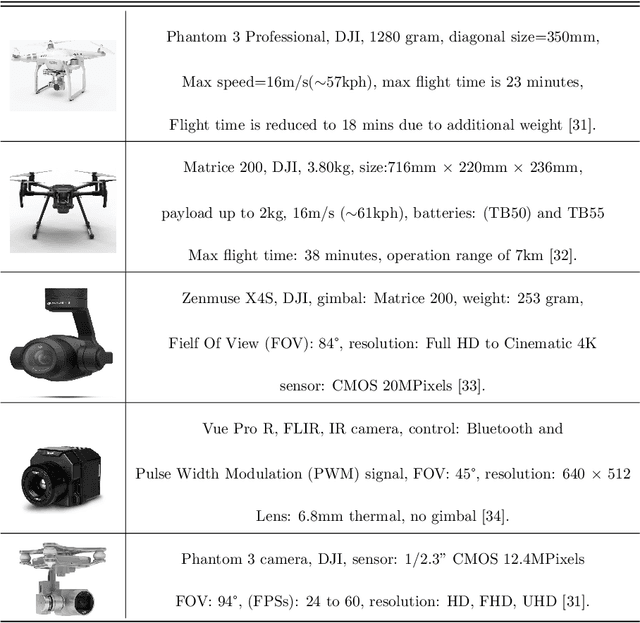
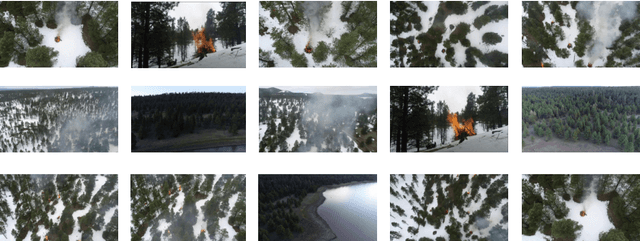
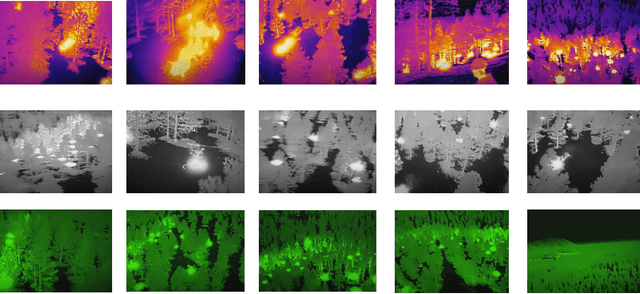
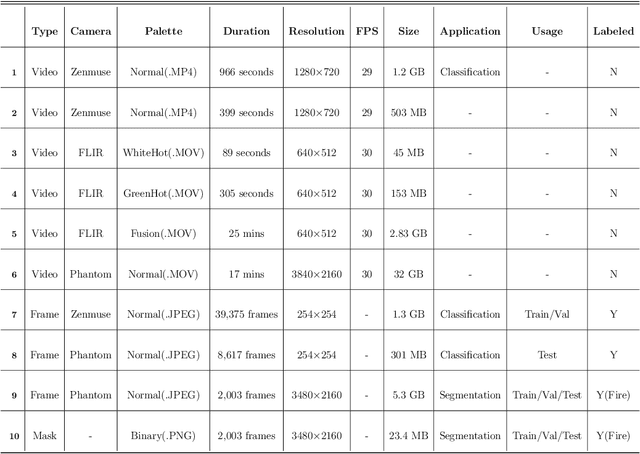
Abstract:Wildfires are one of the costliest and deadliest natural disasters in the US, causing damage to millions of hectares of forest resources and threatening the lives of people and animals. Of particular importance are risks to firefighters and operational forces, which highlights the need for leveraging technology to minimize danger to people and property. FLAME (Fire Luminosity Airborne-based Machine learning Evaluation) offers a dataset of aerial images of fires along with methods for fire detection and segmentation which can help firefighters and researchers to develop optimal fire management strategies. This paper provides a fire image dataset collected by drones during a prescribed burning piled detritus in an Arizona pine forest. The dataset includes video recordings and thermal heatmaps captured by infrared cameras. The captured videos and images are annotated and labeled frame-wise to help researchers easily apply their fire detection and modeling algorithms. The paper also highlights solutions to two machine learning problems: (1) Binary classification of video frames based on the presence [and absence] of fire flames. An Artificial Neural Network (ANN) method is developed that achieved a 76% classification accuracy. (2) Fire detection using segmentation methods to precisely determine fire borders. A deep learning method is designed based on the U-Net up-sampling and down-sampling approach to extract a fire mask from the video frames. Our FLAME method approached a precision of 92% and a recall of 84%. Future research will expand the technique for free burning broadcast fire using thermal images.
An Autonomous Spectrum Management Scheme for Unmanned Aerial Vehicle Networks in Disaster Relief Operations
Nov 26, 2019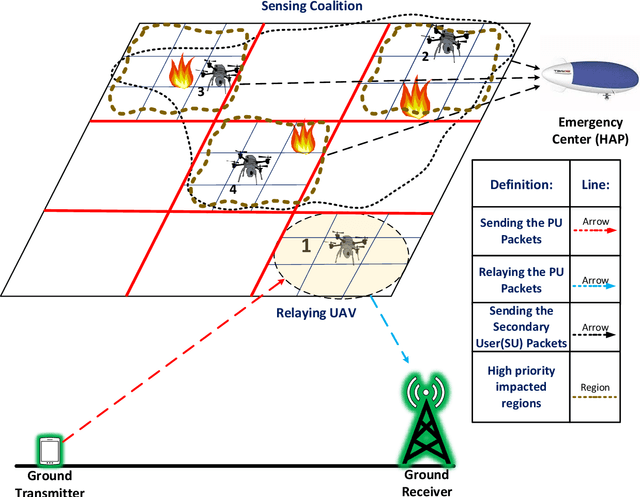

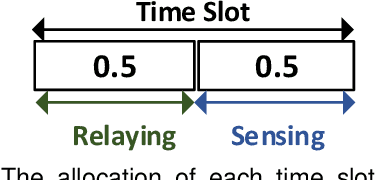
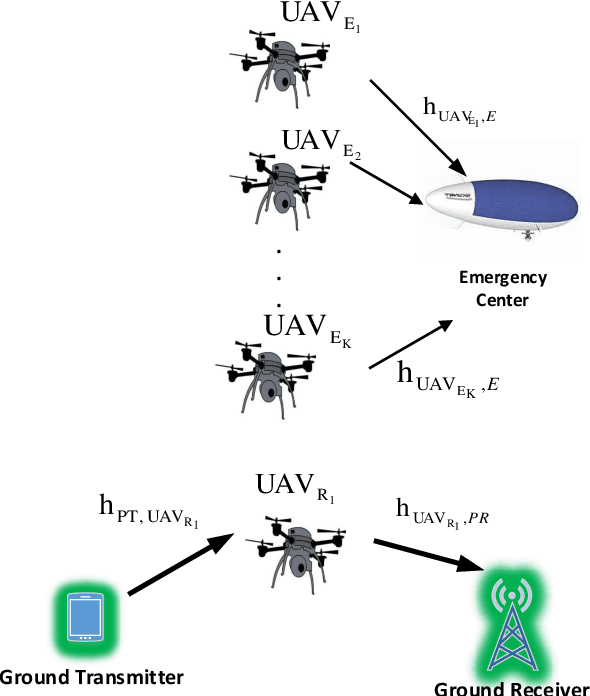
Abstract:This paper studies the problem of spectrum shortage in an unmanned aerial vehicle (UAV) network during critical missions such as wildfire monitoring, search and rescue, and disaster monitoring. Such applications involve a high demand for high-throughput data transmissions such as real-time video-, image-, and voice- streaming where the assigned spectrum to the UAV network may not be adequate to provide the desired Quality of Service (QoS). In these scenarios, the aerial network can borrow an additional spectrum from the available terrestrial networks in the trade of a relaying service for them. We propose a spectrum sharing model in which the UAVs are grouped into two classes of relaying UAVs that service the spectrum owner and the sensing UAVs that perform the disaster relief mission using the obtained spectrum. The operation of the UAV network is managed by a hierarchical mechanism in which a central controller assigns the tasks of the UAVs based on their resources and determine their operation region based on the level of priority of impacted areas and then the UAVs autonomously fine-tune their position using a model-free reinforcement learning algorithm to maximize the individual throughput and prolong their lifetime. We analyze the performance and the convergence for the proposed method analytically and with extensive simulations in different scenarios.
A Solution for Dynamic Spectrum Management in Mission-Critical UAV Networks
Apr 16, 2019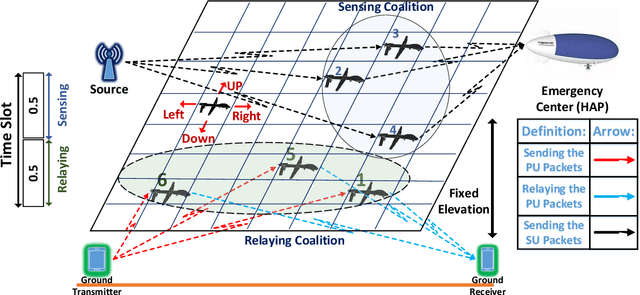
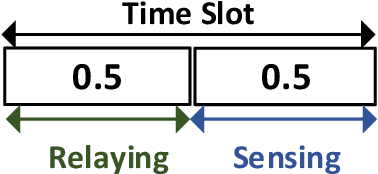
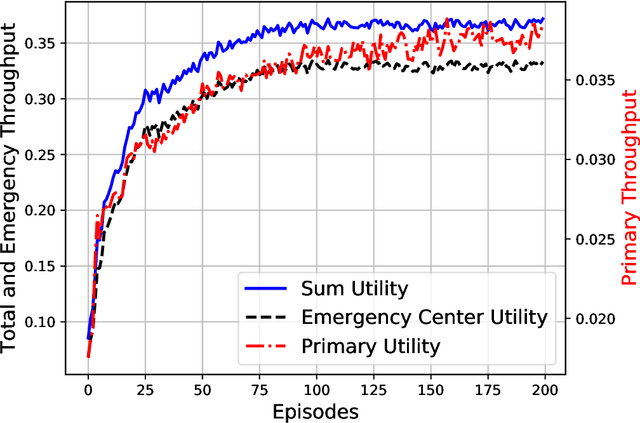
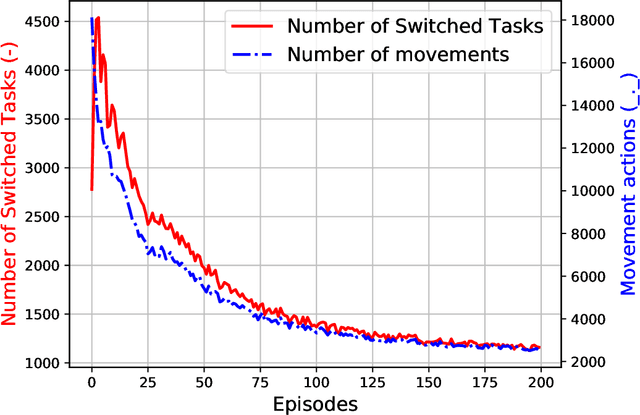
Abstract:In this paper, we study the problem of spectrum scarcity in a network of unmanned aerial vehicles (UAVs) during mission-critical applications such as disaster monitoring and public safety missions, where the pre-allocated spectrum is not sufficient to offer a high data transmission rate for real-time video-streaming. In such scenarios, the UAV network can lease part of the spectrum of a terrestrial licensed network in exchange for providing relaying service. In order to optimize the performance of the UAV network and prolong its lifetime, some of the UAVs will function as a relay for the primary network while the rest of the UAVs carry out their sensing tasks. Here, we propose a team reinforcement learning algorithm performed by the UAV's controller unit to determine the optimum allocation of sensing and relaying tasks among the UAVs as well as their relocation strategy at each time. We analyze the convergence of our algorithm and present simulation results to evaluate the system throughput in different scenarios.
 Add to Chrome
Add to Chrome Add to Firefox
Add to Firefox Add to Edge
Add to Edge